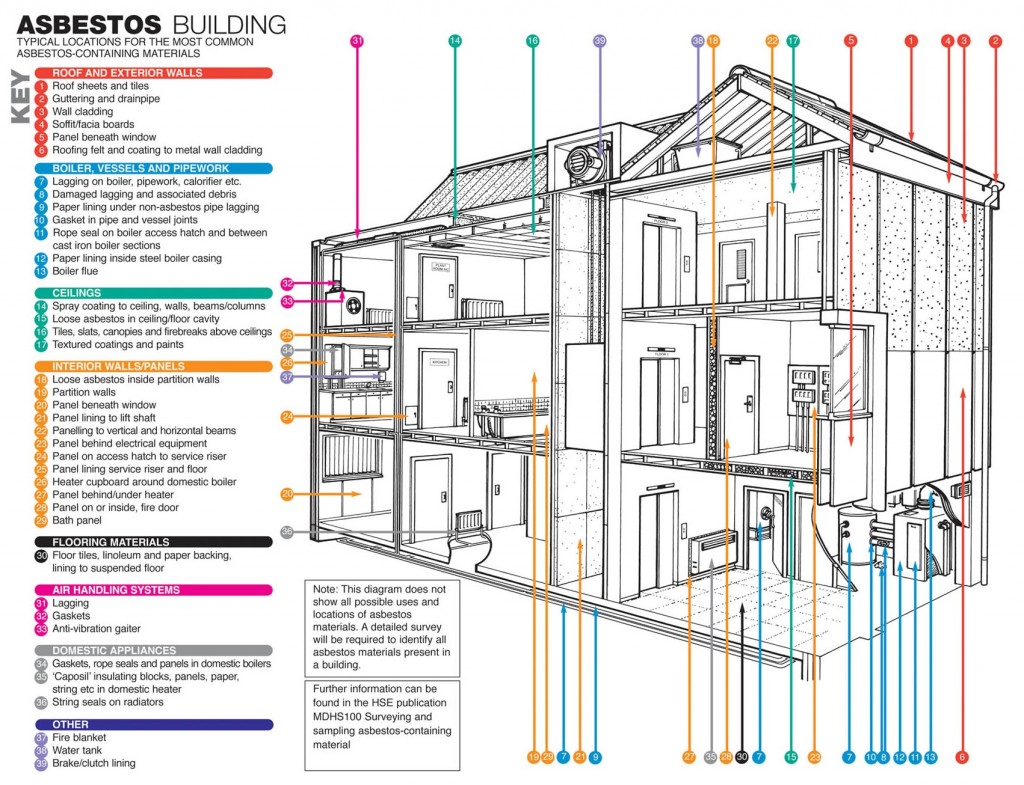When I first ventured out into the world of environmental consulting and legal liability in 1992, I was told that issues pertaining to a mineral called “Asbestos” were pretty much going to be passé in 10 years and that I should plan on concentrating my efforts in other directions.

Asbestos containing materials and products were being hunted down and removed and the days worrying about its impact on property values and human health would soon be over.
More than 20 years later, it seems as if every third commercial features some attorney urging asbestos victims to come forward and be counted and warning about the dangers of asbestos.
What has happened… or maybe more correctly what hasn’t happened???
Asbestos and asbestos products have a clear and distinct history with usage dating back to ancient times. I guess that any time you run across a product that has a 3000 year history of usage, you better believe there are some good reasons behind its popularity.
Asbestos products are strong, provide good insulation, and are heat, chemical, and moisture resistant. The products made from asbestos are so darn good that it took centuries for anyone to really pay attention to the fact that exposure to asbestos fibers could also kill people.
And so, people cooked with asbestos products, constructed buildings with asbestos, smoked cigarettes with asbestos filters, dried their hair with asbestos hair dryers, and put their kids in asbestos pajamas.
When science was finally able to link asbestos exposure with a variety of horrible health consequences including mesothelioma, lung cancer, and asbestosis, the government acted in 1978 to restrict exposure to FRIABLE asbestos.
Friability is defined as the ability of a solid substance to be reduced to powder or in the case of asbestos, respirable fibers which are able to enter the lungs. Friable asbestos materials which were banned included bbwsdatewebsites.com some of the more “notable nasties” such as spray on fireproofing and acoustical ceilings, pipe lagging, duct tape, and drywall texture.
Friable asbestos however did not include materials such as flooring, mastics, drywall compound or a variety of other products which contained asbestos in quantities greater than 1% (the EPA criteria for a material to be considered asbestos containing).
One of the problems with asbestos today is that most people in the United States think all asbestos products were banned 20 or 30 years ago when in fact, these products (in their nonfriable form and often hidden as “trade secrets” in many others) are available at virtually home repair store in this country.
Asbestos is mined in many countries (including friendly Canada to our north) and the value of the mineral and the products it produces continue to generate strong demand. The other confounding issue with asbestos and asbestos exposure is that there is generally a very long latency period between the time of exposure and any indication of disease- usually 20-40 years. Therefore, it is conceivable that many folks now showing up at their lawyers offices may have been exposed during the 70s and 80s.
The other issue with asbestos is that because people misunderstand its prevalence and continued entrée into the marketplace, they believe that buildings constructed after 1980 MUST be asbestos free. This is probably one of the biggest misconceptions in environmental law/consulting today and continues to cause major headaches for property/facility managers and owners throughout the country.

I distinctly remember an asbestos abatement project I was reviewing several years ago which involved a 5 story building in Portland, Oregon. The building owner was paying dearly to remove asbestos containing floor tile from the building and the flooring contractor was installing beautiful new tile –which also happened to contain asbestos !! The law today is that all buildings-REGARDLESS OF THE DATE OF CONSTRUCTION- must be inspected for asbestos containing materials before any renovation, demolition, or other action that will potentially impact any material that could be asbestos containing in that building.
One of the few exceptions to this rule is to obtain an “asbestos free” guarantee from the architect of record for all materials contained in the structure. Today, based on the fact that asbestos containing materials continue to be available and readily used in construction (both openly as well as under the guise of a trade secret), such a guarantee is nearly impossible to obtain.
And so it is nearly bedtime and the friendly asbestos lawyer shows up on the television—only now you understand why he continues to be there and why he will probably be there long into the future- the product is REALLY good, the product can be REALLY bad, impact from exposure takes a REALLY long time to occur, and the product is REALLY still available. A lawyers dream….

